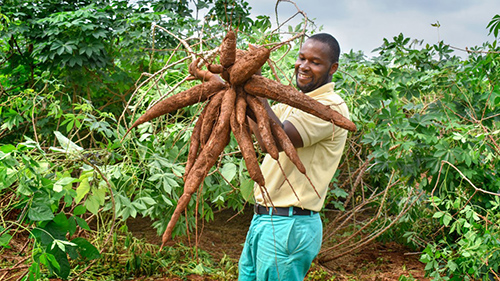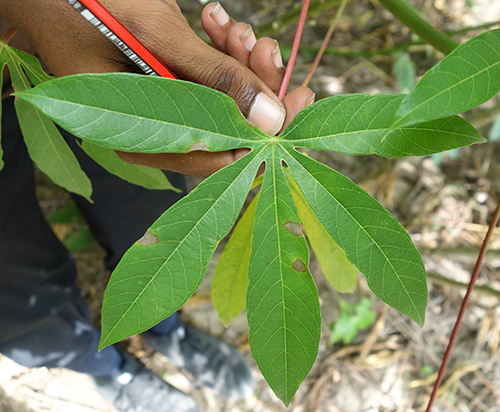Contents

The cassava plant is very nutritious and immensely valued in tropical countries. However, when eaten raw, its root can produce severe toxicity, even causing death. This happens because of the cyanogenic glycosides the root contains, which liberate hydrocyanic acid, a poisonous substance. Fortunately, these toxic substances disappear when the plant is cooked.
Cassava Plant Scientific Facts
- Other names: Bitter cassava, mandioca, manioc, tapioca plant, yucca, Manihot utilissima Pohl.
- French: Manioc, cassave, pain des negres, sagou blanc.
- Spanish: Yuca, mandioca, tapioca.
- Environment: Native to Brazil, now widespread in all tropical and subtropical regions of America, Asia, and Africa. It can grow in poor, dry soils.
- Description: Shrub of the Euphorbiaceae family, with woody, upright, knotted stems which grow up to 2 m high. Its root is a white tuber up to 1 m large and 20 cm in diameter.
- Parts of the plant used medicinally: The tuber (root) after toasted or cooked.
- YUCCA ROOT: Native to North America, Yucca Root contains naturally occurring plant compounds
- PREMIUM EXTRACT: The equivalent of 1,000 mg of Yucca Root per serving in a quick release capsules**
Healing Properties and Indications

The root contains up to forty percent of carbohydrates (mainly starch) but minimal fats and proteins. Thus, its nutritional value is limited, and cassava must not be the basis of any diet. Cassava has digestive, emollient, and mildly astringent properties.

Tapioca is made with cassava flour. It is easily digested and highly recommended for gastritis, gastroduodenal ulcers, dyspepsia, and hypochlorhydria. It is also recommended for gastroenteritis, diarrhea, and colitis. It is an ideal food for weakened people who do not have enough digestive properties.
In external applications, tapioca is used as hot poultices with lemon juice for furuncles, infected sores, and abscesses. It is also used to heal erysipeloid lesions (an infection of the skin caused by streptococcus).
How to use Cassava
- Flour: It is obtained by milling tubers after heating. Several foods can be prepared with this flour.
- Poultices, prepared by adding lemon juice to cassava flour. They must be applied hot.
DISCLAIMER: All content on this website is presented solely for educational and informational objectives. It would be best to not rely on the information provided as a replacement for advice, diagnosis, or treatment from a qualified medical expert. If you are pregnant, nursing, or have any preexisting medical concerns, you should talk to your doctor before using any herbal or natural medicines.
REFERENCES
- George D. Pamplona-Roger, M.D. “Encyclopedia of Medicinal Plants.” George D. Pamplona-Roger, M.D. Encyclopedia of Medicinal Plants. Ed. Francesc X. Gelabert. vols. 2 San Fernando de Henares: Editorial Safeliz, 2000. 460. Print.[cassava plant]
- National Institutes of Health: The Role of Resistant Starch: https://www.ncbi.nlm.nih.gov/pmc/articles/PMC3722236/
- American Diabetes Association: Resistant Starch: https://diabetesjournals.org/care/article/45/Supplement_1/S83/138927/6-Glycemic-Targets-Standards-of-Medical-Care-in
Last update on 2025-06-03 / Affiliate links / Images from Amazon Product Advertising API





